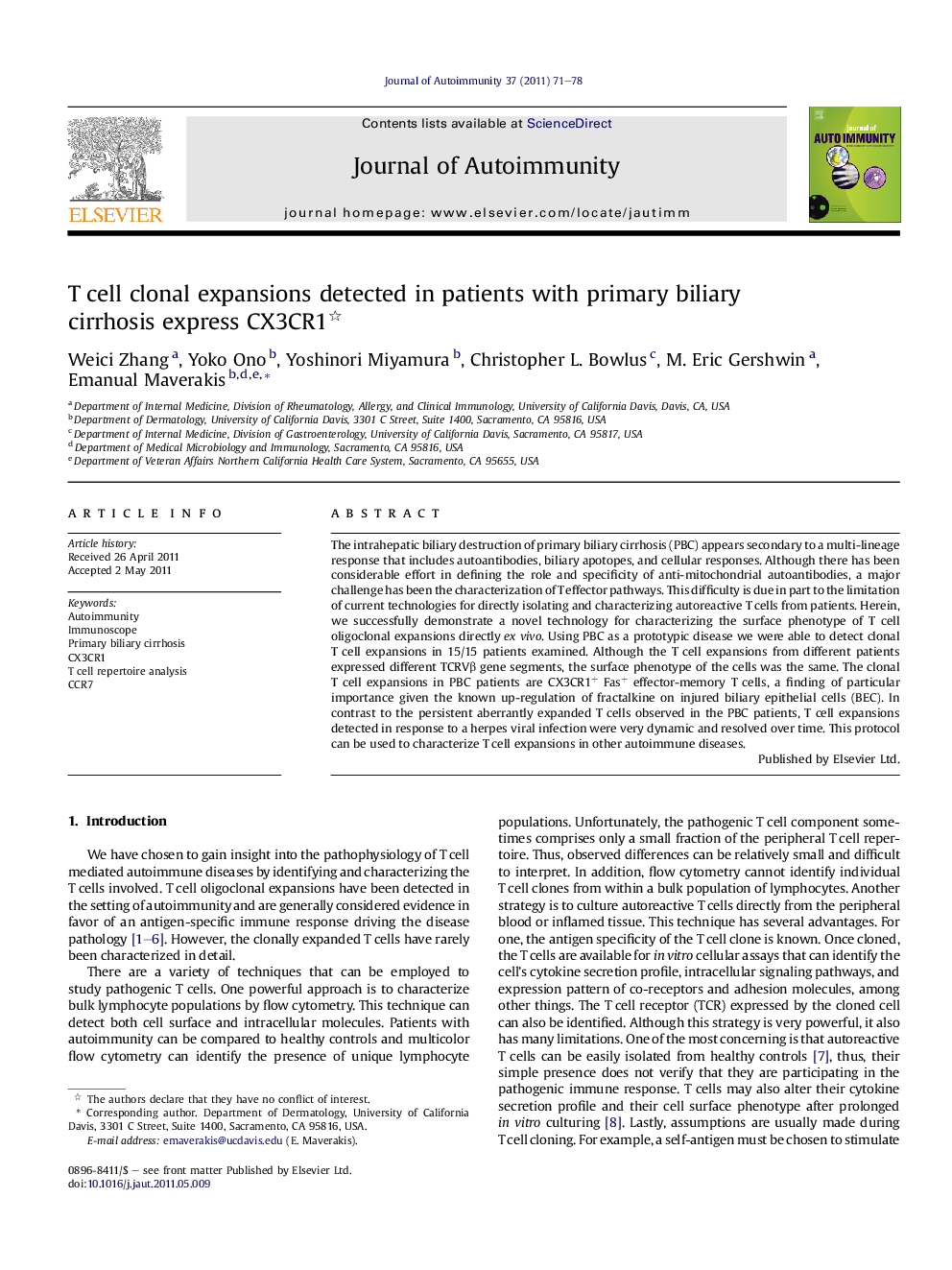| Article ID | Journal | Published Year | Pages | File Type |
|---|---|---|---|---|
| 3367964 | Journal of Autoimmunity | 2011 | 8 Pages |
The intrahepatic biliary destruction of primary biliary cirrhosis (PBC) appears secondary to a multi-lineage response that includes autoantibodies, biliary apotopes, and cellular responses. Although there has been considerable effort in defining the role and specificity of anti-mitochondrial autoantibodies, a major challenge has been the characterization of T effector pathways. This difficulty is due in part to the limitation of current technologies for directly isolating and characterizing autoreactive T cells from patients. Herein, we successfully demonstrate a novel technology for characterizing the surface phenotype of T cell oligoclonal expansions directly ex vivo. Using PBC as a prototypic disease we were able to detect clonal T cell expansions in 15/15 patients examined. Although the T cell expansions from different patients expressed different TCRVβ gene segments, the surface phenotype of the cells was the same. The clonal T cell expansions in PBC patients are CX3CR1+ Fas+ effector-memory T cells, a finding of particular importance given the known up-regulation of fractalkine on injured biliary epithelial cells (BEC). In contrast to the persistent aberrantly expanded T cells observed in the PBC patients, T cell expansions detected in response to a herpes viral infection were very dynamic and resolved over time. This protocol can be used to characterize T cell expansions in other autoimmune diseases.
